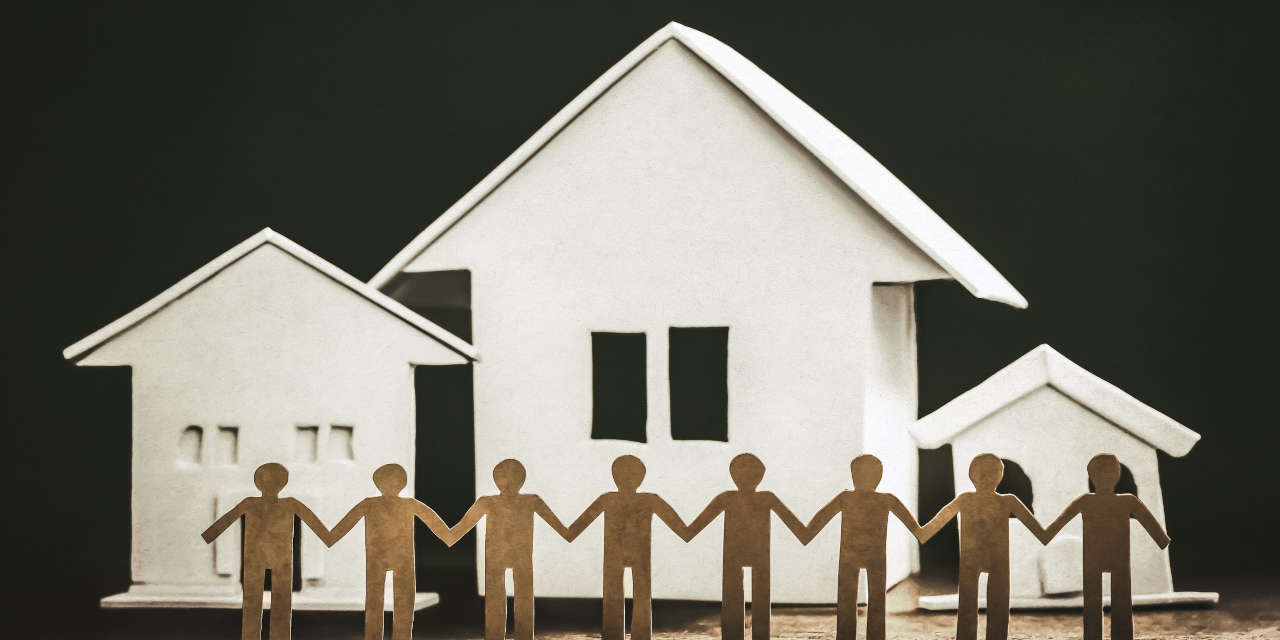By Jack Cumming
The next revolution in senior housing may not be only for older Americans. Cohousing can benefit all Americans. It looks a lot like today’s senior housing. Is it the most overlooked opportunity in America? This may be key to realizing the intergenerational prospect that is much talked about of late.
Life Like a Hamster
Imagine you come home tired after a long day at work. You drive into the garage of your palatial suburban home. This was to be your happy place, but driving past your neighbors’ homes you realize they aren’t your friends. They’re just your neighbors.
Then, you settle into your favorite chair, kick off your shoes, and turn on the TV to find escape. Escape from what? Is it escape from the monotonous reality of your daily routine? Is it because your partner is a solitary person who doesn’t seem to have much to say? Has television become your primary friend?
That’s the kind of experience that may be leading to a fresh imagining of the American Dream. At one time, that dream was of the Land of Opportunity. Then, after World War II, it became a house of your own with a car in the garage. That gave us Levittown and mass production single-family housing. That dream is beginning to shift.
Convenience Living
For a growing number of Americans, including many older Americans, the American Dream is evolving to be more convenient than a long car commute from the exurbs. Imagine coming home in 20 minutes to a carefree residence with meals available in case you’re just too tired to think of cooking. If your spouse is also too tired to listen to your trials of the day, friends are just outside your door in the common area.
Sure, there’s still the universal opiate of television, though it’s hard to find anything to watch, and friends are so much more interesting. It can also be more uplifting to help out a neighbor, just because you’re friends, than having to please a supervisor or having to meet metrics to serve corporate efficiency. Friends can be a welcome relief from the daily corporate grind. Congregate living may soon begin to supplant the lure of isolated single-family living as the American Dream transforms into the 21st century.
Is Coliving Our Future?
Cohousing offers that opportunity. Cohousing can be as simple as the Golden Girls living together. It can also be as institutional-appearing as many of today’s CCRCs, as is the case with the 15 cooperatively owned communities developed and managed by United Properties (many branded as Applewood Pointe). Cohousing can be age-restricted, but it need not be.
There’s no reason why many of today’s CCRCs couldn’t continue as cohousing communities if the market moves in that direction. It might take some modifications. The emerging older person may need a space for coworking, or a married couple may not be satisfied with no more than a two-bedroom apartment with a shared sink in the master bedroom. With coliving, and cooperative organization, residents can remodel to meet their wishes, instead of being constrained by unimaginative architectural commonplaces.
The times are changing, and the prize will go to those who have the vision to see the future and the wisdom to take advantage of it. There are those who are satisfied with complacency and mediocrity, and then there are those who create the next big thing and thrive. I’ll put my money on the latter and leave the former to their comforts. “The future belongs to those who believe in the beauty of their dreams.”
Resources
Here are resources that are relevant to these developments:
- Click here for a white paper detailing this and other trends impacting senior living providers (cohousing is found on page 77).
- Click here for a compelling TED Talk about intergenerational cohousing, and click here for its seniors-only variant.
- Click here for a video presentation of Applewood Pointe cooperative senior housing and here for their FAQs.
- If you want real life Golden Girls, then click here, but the business opportunity is to support the larger multifamily community with services and amenities available on site.
There is a business opportunity in interacting with grassroots associations to provide resident-empowering cohousing. Alexis de Tocqueville, an early observer of what made American culture unique, was impressed by the American tendency to address common needs and purposes through grassroots associations. He wrote:
Americans of all ages, all conditions, all minds constantly unite. Not only do they have commercial and industrial associations in which all take part, but they also have a thousand other kinds: religious, moral, grave, futile, very general and very particular, immense and very small; Americans use associations to give fêtes, to found seminaries, to build inns, to raise churches, to distribute books, to send missionaries to the antipodes; in this manner they create hospitals, prisons, schools. Finally, if it is a question of bringing to light a truth or developing a sentiment with the support of a great example, they associate. Everywhere that, at the head of a new undertaking, you see the government in France and a great lord in England, count on it that you will perceive an association in the United States.
As Americans we are custodians of that heritage of ordinary people united for grassroots innovation. Cohousing can bring that heritage to senior housing and communal living. Click here for a wide video discussion of the varieties of cooperative ventures. There may be a pot of gold at the end of this rainbow.







